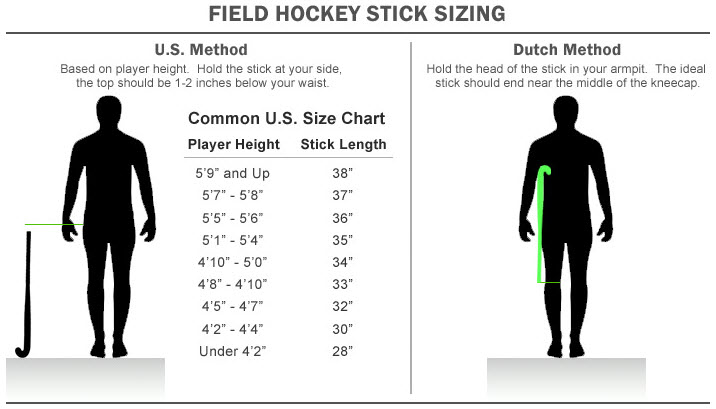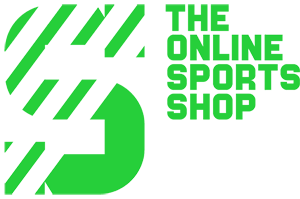Measuring up for that all-important new purchase
With so many variances in Hockey sticks in the modern market, you can be forgiven for feeling a little overwhelmed. There is so much information and recommendations that go with selecting a Hockey Stick, as you can see here from the 5-time world player of the year, Jamie Dwyer. Whilst the more experienced player may be able to recite countless variables specific to them, that does not make them relevant to every player of any age. What is important, however, is to focus on a few key points when identifying the correct size for you.
What You Need To Know
The latest technology that engulfs every new season can leave you questioning everything to do with your new purchase.
How big is my bend going to be?
What Carbon content shall I have?
How heavy do I want it to be?
What graphics look the best?
When it is all said and done, one of the last issues that can sometimes be forgotten about completely is that of the length. How can you be sure you are getting the right length for you?
There are a number of ways of checking the length of a stick and with all Hockey sticks being measured in inches, there is a good range of choice to suit any height, age, ability and position. One thing we would definitely recommend therefore, is trial and error. No matter the brand, quality or bend of a stick, take the time to assess the length and how it feels when carrying out some fundamental skills, notably hitting. This can often give a good indication of whether the length is right for you.
How To Measure Your Hockey Stick
Even within something as objective as the length of a hockey stick, there are different methods of measuring its suitability when compared to the length of its’ owner.
The American method focuses on the length of your stick in comparison to the height of your hip bone from the floor. To measure accurately, you should hold your stick next to you with the head resting on the floor. The top of the handle should rest 2 inches below your hip bone.
According to this method, on average, every player over 5’9 should require a 38 inch hockey stick. With these being relatively sparse within the hockey community, the practicalities of such a long stick would suggest that an alternative method is better suited.
Holland, long perceived to be a global powerhouse of the sport, has an alternative method. This constitutes resting the hook of the stick in your armpit and resting the handle against your knee. According to the dutch method, the ideal length of stick should result in the top of your handle resting somewhere near the middle of the knee cap.
(Credit: best-fieldhockeysticks.com)
 Traditionally in England, the method of measuring your hockey stick against your hip bone has been favourable but there is no substitute for trial and error. From our experience one helpful way to know if a stick is too long, particularly for junior players is when they pick up the stick to dribble do they automatically drop their hand down from the end of the handle therefore shortening the length of stick. The main thing is can the person using the stick execute all the skills from dribbling to 3D Skills, to pushing, hitting and slapping. This is difficult if not buying from a physical store but can try a friends or team mates stick for length as this is uniform in terms of sizing across all brands.
Traditionally in England, the method of measuring your hockey stick against your hip bone has been favourable but there is no substitute for trial and error. From our experience one helpful way to know if a stick is too long, particularly for junior players is when they pick up the stick to dribble do they automatically drop their hand down from the end of the handle therefore shortening the length of stick. The main thing is can the person using the stick execute all the skills from dribbling to 3D Skills, to pushing, hitting and slapping. This is difficult if not buying from a physical store but can try a friends or team mates stick for length as this is uniform in terms of sizing across all brands.
With there being no universally accepted ‘golden rule’ of measuring a hockey stick, working out what works best for you and your game is the most important thing.
When Do I Need A New Hockey Stick?
When first starting out as a junior, the rise through 28”, 30”, 32”, 34” and beyond can be almost annual however the pleasing thing to hear from a financial perspective is that this plateaus shortly afterwards.
With the most prominent sizes throughout Hockey sticks being that of 36.5” and 37.5”, you might be surprised to learn that the difference between the two, albeit an inch, is quite substantial. For many, when growing up, it becomes far easier to play with a stick that may be slightly too big than with a stick that is too small. For that reason, it often serves to benefit having a stick that is slightly longer in length, allowing room for growth.
Personal preference, technique, position and running style all contribute to the decision of stick length in the same way it does to the aforementioned bend, composition and weight.
What Size Hockey Stick Is Right For Me?
As a general guide, the following chart outlines a starting point for stick length measurements based on an individuals’ height;
| Stick Length Based on Height | |
| Under 4’ | 28” |
| 4’ – 4’3 | 30” |
| 4’3 – 4’6 | 32” |
| 4’6 – 5’ | 34” |
| 5’ – 5’3 | 35” |
| 5’3 – 5’6 | 36” |
| 5’6 – 5’9 | 36.5” |
| 5’10 – 6’4 | 37” – 37.5” |
| 6’4 + | 38” |
The key thing to ensure is that whilst playing, you are not arching your back excessively as this is a sure-fire indication that your stick is too small for you. A number of junior players choose to make the jump to a 36.5” early for the same reasons that a young basketball player shoots on 10 feet rims; if the variables don’t change, the technique doesn’t either.
Does My Position Affect My Hockey Stick?
One variable that is worth considering is your position on the pitch.
A defender may prefer to play with a slightly longer stick to aid their reach in tackles as well as their ability to generate pace when passing over a greater distance, such as sweeping the ball like England U21 Captain, Eddie Way. For a forward, they may prefer a slightly shorter stick to assist with their dribbling and close control, like Olympian, Robbert Kemperman.
OVERVIEW
THERE IS NO GOLDEN RULE
This is so important to remember when choosing a Hockey stick! The Online Sports Shop guide above is simply that; a guide!
As long as the stick feels good, you don’t find yourself continually missing the ball and it doesn’t cause you to excessively arch your back whilst dribbling and your able to execute all the core skills to the best of your ability, then you’re probably on the right lines.
Remember, no matter whether you’re looking for a brand new JDH, Grays, Osaka, Voodoo, Kookaburra, Malik, Adidas, Mercian, Dita, Crown, YoungOnes, or TK, the sizings all remain the same so it is crucial to test out some different sizes to see what works best for you!
